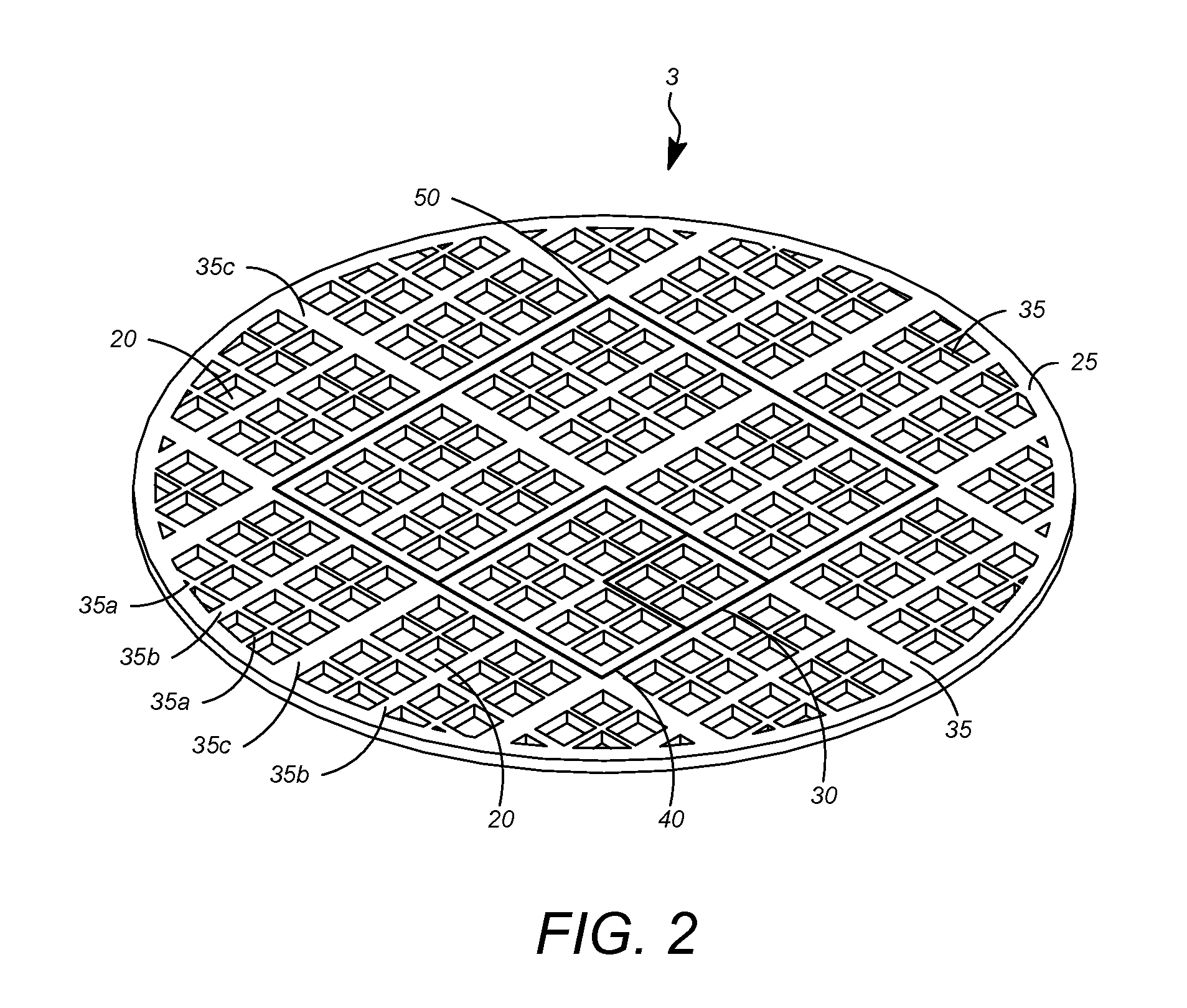Fermentation of gaseous substrates
a technology of gaseous substrates and fermentation equipment, which is applied in the direction of biochemical equipment, biochemical equipment and processes, biofuels, etc., can solve the problems of the volume of the bioreactor and the capital cost of the fermentation equipmen
- Summary
- Abstract
- Description
- Claims
- Application Information
AI Technical Summary
Benefits of technology
Problems solved by technology
Method used
Image
Examples
example 1
Comparison of Bioreactor Performance with Various Riser Internals
[0154]The effect of using differing reactor internal structures on performance parameters, including CO utilization, was evaluated for a biological process for converting CO to ethanol using an aqueous culture of Clostridium autoethanogenum. A circulated loop reactor was used for the studies, in which a CO-containing feed gas was sparged into the bacterial culture near the bottom of a riser section, and was allowed to dissolve in the liquid, such that it could be consumed in the bacterial fermentation for the production of ethanol and other metabolites (e.g., acetic acid or acetate). At the top of the riser, unconverted (i.e., un-utilized) CO and other gases in the feed, which were not dissolved or entrained in the bacterial culture, were disengaged from the liquid and exited the reactor at an outlet port above the riser section. A circulation pump (“loop pump”) returned the liquid, free of the disengaged gas, back to ...
example 2
Extended Performance Testing, Fractal Grids Vs. Conventional Packing
[0163]Further tests using a pilot plant scale, circulated loop reactor for the biological conversion of CO to ethanol were conducted to better evaluate the performance of the fractal grids, relative to conventional packing material used in gas-liquid contacting applications. The process features, including the bacterial culture, were as described with respect to Example 1 above, except for the use of a much larger circulated loop reactor of about 500 liters in volume. A key relationship for investigation was the effect of varying the loop pump speed on CO utilization. The loop pump speed is directly related to the amount of energy needed for circulation and represents a major operating cost of the biological conversion process. FIG. 13 shows this relationship over an extended, 30-day steady-state operating period in the case of using conventional structured packing material in the reactor riser. FIG. 14 shows the co...
PUM
 Login to View More
Login to View More Abstract
Description
Claims
Application Information
 Login to View More
Login to View More - R&D
- Intellectual Property
- Life Sciences
- Materials
- Tech Scout
- Unparalleled Data Quality
- Higher Quality Content
- 60% Fewer Hallucinations
Browse by: Latest US Patents, China's latest patents, Technical Efficacy Thesaurus, Application Domain, Technology Topic, Popular Technical Reports.
© 2025 PatSnap. All rights reserved.Legal|Privacy policy|Modern Slavery Act Transparency Statement|Sitemap|About US| Contact US: help@patsnap.com



